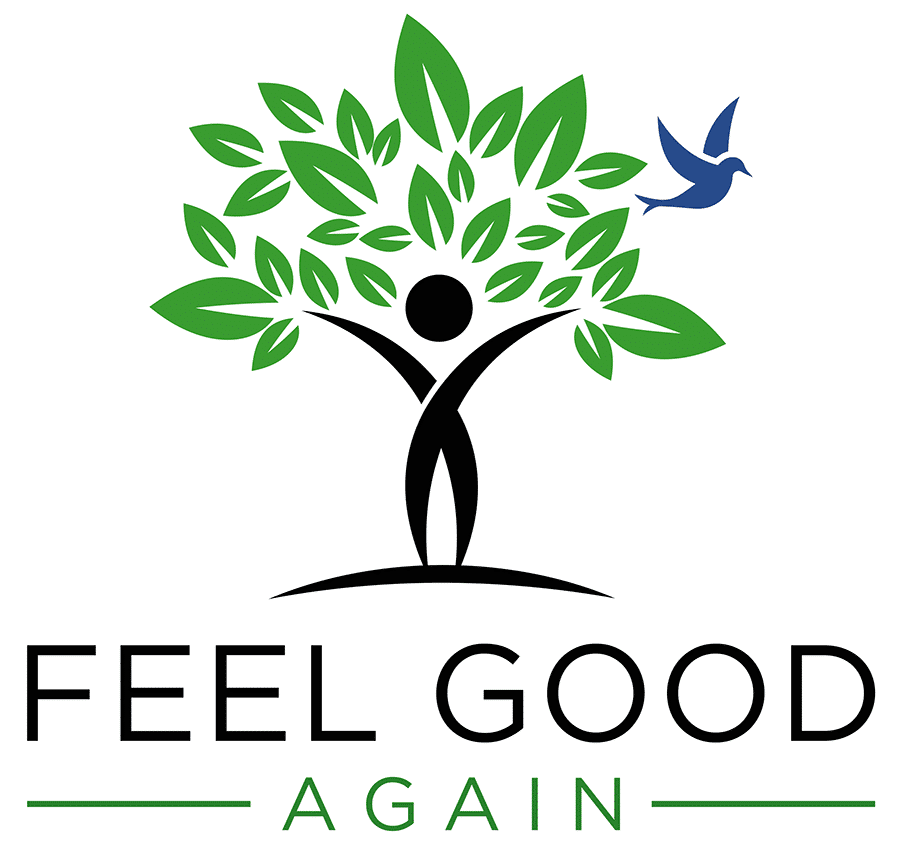 Progesterone Therapy: The Power of Peace and a solution to symptoms from menstrual cycles. Are you feeling fat, flabby, flaky, foggy, fatigued or forgetful, maybe even frumpy? Welcome to hormonal havoc. Women have very complex and interconnected systems that regulate hormones. There is no need to worry because a lot is under your control. While hormones control everything such as weight, body mass, sugar and salt levels, mood, memory, sex drive and fertility, your lifestyle controls your hormones. What you eat, drink, think, how much you sleep and how much you exercise has an effect. When that doesn’t work there is always the option to try bioidentical hormone replacement therapy or herbal preparations.
Progesterone Therapy: The Power of Peace and a solution to symptoms from menstrual cycles. Are you feeling fat, flabby, flaky, foggy, fatigued or forgetful, maybe even frumpy? Welcome to hormonal havoc. Women have very complex and interconnected systems that regulate hormones. There is no need to worry because a lot is under your control. While hormones control everything such as weight, body mass, sugar and salt levels, mood, memory, sex drive and fertility, your lifestyle controls your hormones. What you eat, drink, think, how much you sleep and how much you exercise has an effect. When that doesn’t work there is always the option to try bioidentical hormone replacement therapy or herbal preparations.
The hormones that fluctuate throughout life are not necessarily what you think. Every time a woman gets a symptom, they think it has to do with estrogen. However the hormone that decreases first or is insufficient is usually progesterone and symptoms can be relieved with progesterone therapy. This occurs in the teenage years and recurs again in most women, as early as their mid to late 30’s or 40’s The latter decade is the time period called perimenopause, which can precede menopause by 10 or more years.
Hormone Cycles Through the Ages
Teens
In the teenage years as hormones are ramping up and young women begins to cycle, an egg does not always develop and ovulation does not occur. This is called an anovulatory cycle. Estrogen is produced but unless you ovulate, little progesterone is produced and all of the symptoms of high estrogen, which is not balanced by progesterone, occur. This is known as estrogen dominance. Even though estrogen may be at a normal level, if it is not balanced by progesterone, the effects of estrogen dominate over the effects of progesterone.
Those terrible teens have the hallmark of mood swings, bursts of anger, irritability, cramping, bloating and other symptoms that are attributed to PMS or premenstrual syndrome. Most women go through a hiatus in their 20’s and early 30’s when cycles are well established and they are symptom free. There is hope and help in the form of diet, lifestyle, herbs and/or progesterone treatment. The best herb to stimulate your body to make more progesterone is chasteberry otherwise known as vitex agnus –castus.
Peri partum
During pregnancy when levels of estrogen and progesterone are high and not fluctuating, most women feel great. However, in the post partum period, hormonal cycles don’t return to normal right away and progesterone remains low. Although, this may be responsible for post partum depression and can be relieved with progesterone treatment.
Perimenopause
During perimenopause as hormones are ramping down women can experience many of the symptoms of PMS and aging. By this time, women are running out of eggs and therefore don’t always ovulate. Since perimenopause can drag on for 10 or more years and estrogen remains high in relation to low or no progesterone, they may develop fibroids, ovarian cysts, fibrocystic breasts, hair loss and many more complications of estrogen dominance.
Women describe perimenopause as feeling out of control and not feeling like themselves anymore. They gain weight, lose hair, get bloated, have heavy and or irregular periods, develop fibroids or fibrocystic breasts and other signs or symptoms.
Menopause
Menopause is defined as cessation of a period for a year. At this time, estrogen and progesterone are low. Symptoms are dryness, memory loss, mood swings, weight gain, hair loss, loss of sex drive, fatigue, hot flashes, night seats, and anger, anxiety and depression. Moreover, many other hormones can be low in this phase and if symptoms cannot be controlled, bioidentical hormone replacement therapy can be a lifesaver. It’s important to look at all of the hormones as they affect each other.
Estrogen dominance
Estrogen dominates because it is made in fat, especially abdominal fat, ovaries and the adrenal glands, and it is in our environment. Due to exposure to a lot of estrogen like compounds in the environment and chemicals and toxins that act on the estrogen receptor, women and men can experience symptoms of high estrogen or low progesterone throughout their lives. Many symptoms of low progesterone mimic those of estrogen dominance. Estrogen dominance occurs when estrogen is higher in relation to a normal level of progesterone or progesterone is lower in relation to a normal level of estrogen. To feel good you need to have a balance of estrogen to progesterone.
Symptoms of low progesterone:
- Achy joints
- Anger
- Anxiety
- Bloating
- Breast Tenderness
- Endometriosis
- Fibrocystic breasts
- Fibroids
- Fluid Retention
- Headaches
- Heavy periods
- Insomnia
- Irregular periods
- Irritability
- Migraines
- Painful periods
- PCOS or polycystic ovary syndrome
Estrogen makes things grow – breasts, uterine lining, waistline and it also causes excitability if not balanced by progesterone. On the other hand, progesterone balances the effects of estrogen by stopping unbridled growth of uterine and breast tissue, acts as a diuretic to prevent fluid retention and calms the nervous system to allow for a restful sleep.
Avoid Environmental Estrogens
If you are experiencing any of the symptoms of low progesterone, high estrogen or estrogen dominance, it is best to avoid environmental estrogens. Estrogens are fed to animals, and fish to make them grow and the by products such as dairy from the animals contain estrogen. This worsens the symptoms. They are also found in many foods and products. There are many hormone disrupters to avoid.
Hormone disruptors
- BPA in plastics and linings of cans – eat fresh and don’t heat in plastic
- Herbicides and pesticides – eat organic, wash produce thoroughly and at least buy the dirty dozen organic. The dirty dozen are the most heavily laden with pesticides and are: apples, bell peppers, celery, cherries, grapes, lettuce, nectarines, peaches, pears, potatoes, spinach and strawberries.
- Hormones in animal products – meat, dairy, poultry and fish are fed hormones to fatten them up. Not only will they make you fat, the hormones they have been fed will be ingested and disrupt the delicate hormone balance needed to feel good. Buy wild caught fish, organic meat, poultry and dairy and better yet, organic, grass fed meat and poultry.
- Personal care products – we are exposed to hundreds of chemicals on a daily basis. Phtlhaltes, parabens, petroleum distillates, BHA and fragrance are in our shampoos, detergents, soaps, cosmetics and personal care products. These are hormone disruptors and many have estrogenic effects. Read the labels carefully. Choose natural products that are free of these ingredients. There are a lot more to choose from and the cost is now more reasonable.
In addition, avoiding environmental estrogen and eating plenty of soluble fiber found in apples, pears, berries, beans and oats can bring you into better balance and alleviate symptoms. However, when these measures don’t work, consider progesterone therapy.
Effects of progesterone therapy:
- Anti inflammatory
- Balances estrogen, counters growth effects of estrogen
- Builds bone
- Calming effect by activating GABA
- Converts fat to energy
- Diuretic effect, balances fluids
- Enables fertility
- Natural antidepressant
- Protects neurons or nerves – promotes myelination
- Promotes restful sleep
- Promotes Immunity
- Regulates blood sugar
- Regulates thyroid activity
- Relaxes smooth muscle
Progesterone and Progestins are NOT the same
For those people who were scared off by the headlines regarding hormone replacement therapy or progesterone therapy, the confusion lies in misuse of the name progesterone. When discussing progesterone therapy, many of the studies, including the infamous Women’s Health Initiative used the term progesterone treatment when referring to the synthetic form of progesterone called medroxyprogesterone acetate (MCA). This is NOT the same as natural, bioidentical progesterone, which is the same chemical structure as that in your own body. The synthetic forms have different shapes and structures. While they have similar effects on the uterus, stop overgrowth of uterine tissue and stop bleeding, they have very different effects on other tissues such as the brain, breast and coronary arteries.
After that, progestins or synthetic progesterone goes by many names. For example, they are used most often for birth control, controlling heavy periods, menopause and uterine bleeding. Some are mixed with natural bioidentical or synthetic estrogens. Some examples of progestins that have been used in various combinations are:
- desogestrel, etonogestrel (Nexplanon)
- drospirenone (Yasmin, Yasminelle, YAZ)
- levonorgestrel (Plan B, Next Choice, Postinor, “the morning after pill,”)
- medroxyprogesterone acetate (Provera, Depo-Provera)
- norethindrone (many brand names, most notably Ortho-Novum and Ovcon)
- norethindrone acetate (Aygestin, Gestakadin, Milligynon, Monogest, Norlutat)
- norethynodrel (Enovid)
- norgestimate (Ortho Tricyclen, Ortho-Cyclen)
- norgestrel, (Alesse, Trivora-28, Ovrette, Mirena)
There are others…
So when evaluating a progesterone therapy or a study using progesterone treatment, make sure you look at what was used or being prescribed. The actual name makes a difference because the media or ads may use the word progesterone but as you can see, it has been given many names and the side effects differ. Just think about it. Is a trans fat the same as an Omega 3 fat? No, and a synthetic progestin is not the same as a natural bioidentical progesterone. As a savvy consumer, check the study and labels and don’t just count on the headlines.
Most of the studies that hail the dangers of hormone replacement therapy or progesterone therapy are actually studies that look at sub populations or different aspects of the infamous Women’s Health Initiative. However, that study had many flaws and only studied synthetic hormones. Here are some of the flaws:
- Average age of participants was 63.
- Most women were 10 years past menopause.
- A high percentage of the study participants were smokers and at high risk of heart disease.
- The compounds used were Premarin or conjugated equine estrogen (CEE) made from horse urine, and/orProvera or medroxyprogesterone acetate (MPA) or Prempro which is a combination of CEE and MPA.
- The doses used are high compared to what is used now and were fixed and not individualized; meaning a 200 pound woman got the same dose as a 100 pound woman.
The Conclusion:
After years of studying the study were that estrogen alone did not significantly increase the risk of breast cancer, the use of progestin did increase the risk of breast cancer. If you have symptoms of low hormones, the earlier you start the better and it is best to start within the first 5 years using the lowest dose possible. Although most of the studies were done on menopausal women, progesterone has benefits throughout a woman’s life and is often the cause of many of the unpleasant symptoms that occur during certain parts of the menstrual cycle, pregnancy, and metabolic disturbances regardless of cycle time. Natural bioidentical hormones have been studies and have many positive effects. Some even showed decreased risk of breast cancer.
Benefits of Progesterone Treatment
Furthermore, studies were done on natural bioidentical estrogen and progesterone treatment comparing it to treatment with synthetic hormones. The E3N cohort study by
Agnès Fournier, Franco Berrino and Françoise Clavel-Chapelon found the following:
- Estrogen given <10years after menopause protects women from heart disease and all cause mortality.
- Natural progesterone with estrogens confers less or even no risk of breast cancer as opposed to the use of other synthetic progestins.
- Estrogen used with MPA (synthetic medroxyprogesterone acetate) had a 69% increased risk of breast cancer.
Other studies and review articles support the use and the differences of natural bioidentical hormones such as Eileen Conway’s review: “Bioidentical Hormones: An Evidence-Based Review for Primary Care Providers” and Kent Holtorf, MD’s article: “The bioidentical hormone debate: Are bioidentical hormones (estradiol, estriol, and progesterone) safer or more efficacious than commonly used synthetic versions in hormone replacement therapy? “
Therefore, there are many more studies that support the use of natural bioidentical hormone replacement. The main point is that when reading headlines, it is important to know what type of hormone was used and who the study subjects are. Even now, new studies keep being published on the same subjects used in the WHI Women’s Health Initiative study, which used only synthetic hormones on high risk subjects. On the other hand, become an educated consumer to determine which treatment options are right for you. Don’t be scared by headlines.
Most women in their early years are deficient in progesterone and won’t need estrogen until they enter menopause. Furthermore, bioidentical progesterone therapy has many benefits and can be used safely for the symptoms associated with low progesterone.
Other positive effects of progesterone are:
- Decreases risk of breast cancer
- Decreased spasms in the coronary arteries in the heart
- The higher the progesterone levels during life the lower the risk of breast cancer.
- High progesterone in pregnancy reduces the risk of breast cancer by 50%
- Stimulates release of dopamine
- Lots of benefits to brain
Progesterone treatment can be very beneficial to reduce symptoms of PMS, PCOS, perimenopause, menstrual migraines, weight gain, bloating, heavy or irregular periods, anxiety, insomnia and irritability. Many women are given anti anxiety, anti depressants or birth control pills which may address the symptoms but don’t address the true underlying cause of the symptoms. It is worth a trial of progesterone therapy to see if symptoms resolve. Younger women may benefit from a trial of Chasteberry, however if it doesn’t raise progesterone levels or relieve symptoms, giving natural bioidentical progesterone usually helps.
Since symptoms of other illnesses may be similar to that of low progesterone, get your levels measured and seek the advice of a physician who understands functional, anti aging medicine. There are many other things that can help balance your hormones such as an individualized exercise prescription, adequate sleep, proper nutrition, correcting nutritional deficiencies and bypassing genetic variants that impair hormone metabolism. Stress plays a major role in hormone balance and optimal levels of thyroid hormones are essential to regulating weight, metabolism, menstrual cycles and fertility. A functional medicine physician can take all these factors into account and recommend a plan that is individualized to your specific needs. You can live younger, healthier and symptom free with an individualized plan, support and guidance.





She is a recognized and award-winning holistic, functional, integrative and anti-aging healthcare practitioner, speaker and author, and has been featured in ABC News, Forbes, WOR Radio and many media outlets to spread the word that you can live younger and healthier at any age.